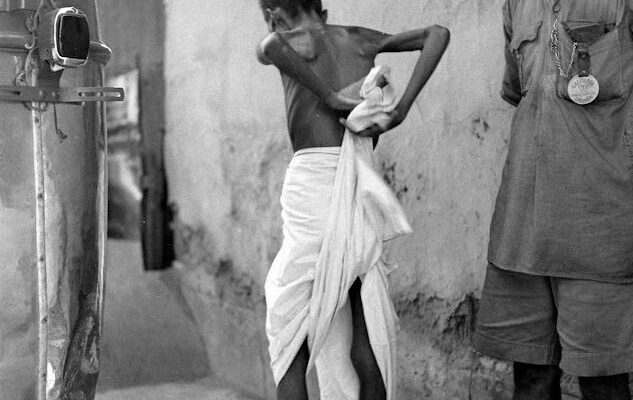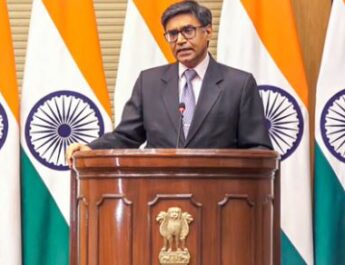In December 1941, Japanese forces invaded the British colonies of Singapore and Burma (Myanmar). After the war that lasted for the next 5 months, the Japanese army won both places in May 1942. After this, the Japanese army moved towards India.
Soon the Andaman and Nicobar Islands were also occupied by the Japanese troops. It was believed that Japan would now attack Bengal. During the Second World War, Calcutta (Kolkata) used to be an important center of the war plan of the British. For this reason, the British Army was expecting an attack from the Japanese Navy.
In such a situation, the British government implemented the ‘Denial Policy’ in coastal areas like Chittagong and Midnapore of Bengal. It is believed that due to this policy of the British, starvation started in Bengal.
The British thought behind this policy was that if the Japanese marines reach here, they could not get anything to eat. The then CM of Bengal Fazlul Haque criticized this policy of the British government and gave the slogan ‘Dal Bhaat for all’.
On the other hand, thousands of British soldiers were reaching Calcutta. A large quantity of grain was needed for their food and drink. In order to ensure that there was no shortage of food for the British soldiers, the British government formulated a policy that food grains were supplied to the military camps and cities.
Because of this, there was a shortage of food grains in the villages of Bengal. During this time the British government allowed food grains to reach only those people who were important for fighting the war. The number of people dying of hunger in the villages started increasing rapidly.

To ensure that there was no shortage of food grains in government godowns, the police started confiscating rice from people’s homes. At this time the price of rice increased by about eight and ten times. Rice completely ran out in the village markets.
The rice which the government and the police could not confiscate from the farmers, was bought by businessmen and black marketing traders at high prices.
In this way, a large number of people were left to die without any investigation. The result was that human corpses started appearing in the streets of Calcutta, in the villages and fields of East Bengal.
The conditions at that time were so bad that historian Mike Davies, in his book ‘Late Victorian Holocaust’, compares the people who died of hunger in Bengal with those who died in Nazi camps and atomic bombs in Hiroshima and Nagasaki.
He wrote in his book that the condition of people dying of hunger during the colonial period in Bengal was almost the same as that of the common people who died from the atomic bombs dropped on Hiroshima and Nagasaki from a height of about 18,000 feet.
The people of Bengal were dying due to the decisions of the government, not due to the lack of food grains.
According to Nobel laureate Amartya Sen, author of the book ‘Poverty and Famine’, in 1943, when people were dying of hunger on the streets in Bengal, there was enough rice in government godowns to feed everyone, but very few people had enough. Had money to buy this rice.
Midnapore and its surrounding area were completely destroyed due to the cyclone that hit on 16 October 1942. About 20 feet high waves were rising on the seashore. The wind was blowing at a speed of 225 kilometers per hour in Bengal.

About 40 thousand people died in Bengal due to this storm. Those who somehow survived the storm were forced to leave their homes and go to cities like Howrah and Calcutta. Due to the cyclone, the yield of crops in West Medinipur and the surrounding area was not good, but in spite of this, there was a good yield of rice this year in comparison to 1941 in other parts of Bengal.
Geophysical Research Letters also stated in its research paper that the Bengal famine of 1943 was the only such famine in the Indian subcontinent, which was not due to drought or the destruction of crops.
This famine was man-made and due to the wrong policies of the British government. The soil moisture in Bengal was above average this year as compared to recent years. This meant that the soil was capable of producing grain.
That one decision of Churchill, due to which people started starving in Bengal
According to Madhushree Mukherjee in her book ‘Churchill’s Secret War’, on 27 July 1943, Archibald Wavell wrote in his diary that-
‘British PM Winston Churchill does not consider Bengal’s famine as a big issue but considers it a local issue.’
On August 4, a meeting of the War Cabinet was held under the leadership of British PM Churchill. In this meeting, the issue of sending food grains to the people dying of hunger in Bengal came up. The officials immediately recommended sending 5 lakh tonnes of wheat to India.
In the meeting, Churchill refused to send grain to India saying that- ‘Indians who produce babies like rabbits are themselves responsible for this famine.’
At the same time, in this meeting, Churchill gave orders to send grain to the rest of Europe. So that there is no shortage of food for the British soldiers during the war. Field Marshal of India Archibald Wavell later wrote in his diary that the Bengal famine was one of the greatest tragedies during the colonial period. The loss caused to the image of the British Government by this could never be recovered.
When America and Canada wanted to help, Churchill rejected that too.
The National Medicine Library website has claimed in one of its reports that in August 1943, the Mayor of Calcutta Syed Badrudduja wrote a letter to US President Franklin D. Roosevelt and appealed to send food grains as soon as possible.
It is believed that Winston Churchill turned down the US government’s decision to supply emergency food to India. Not only this but when Canada wanted to send 1 lakh tonnes of wheat as aid to India, a British committee put a stop to this too.
When the people of the Indian Assembly tried to ask for food aid from the United Nations Relief and Rehabilitation Department after not getting help from the British government, the Churchill government did not allow them to do so.

Under the influence of a friend, Churchill allowed the Indian people to die of hunger.
Winston Churchill used to take most decisions after consulting his friend Frederick Lindemann. Frederick was so close to PM Churchill that he made him a part of the War Cabinet.
Not only this, Frederick wrote more than 2000 memos to Churchill giving advice on different issues. One of these was also about not sending food grains to the people dying of hunger in India.
Churchill had also ordered the extra grain stored in the government godowns of India to be sent to the British soldiers stationed in Sri Lanka. When the ships carrying wheat from Australia reached the Indian ports, the British officials sent these ships directly from there to the Middle East.
The British resorted to censorship to hide the famine.
British PM Churchill’s statements and policies in 1943 seemed like he was not concerned about the people dying of hunger in Bengal. He wanted to make maximum use of only and only Indian resources during the Second World War. For this reason, they resorted to censorship and propaganda to suppress the news of lakhs of people dying in Bengal.
PM Churchill did not want the news of people dying of hunger in India to reach the people of his country. For this reason, his government started telling India’s zamindari system and the monsoon responsible for this famine.
From March 1943 to October 1943, no one was allowed to report on the famine, but Ian Stephens, the editor of the Statesman newspaper, tried to show the horror of the famine by printing pictures of bodies lying in the streets and roads of Calcutta. About six months later, the British Parliament accepted that Bengal was in the grip of a devastating famine.




